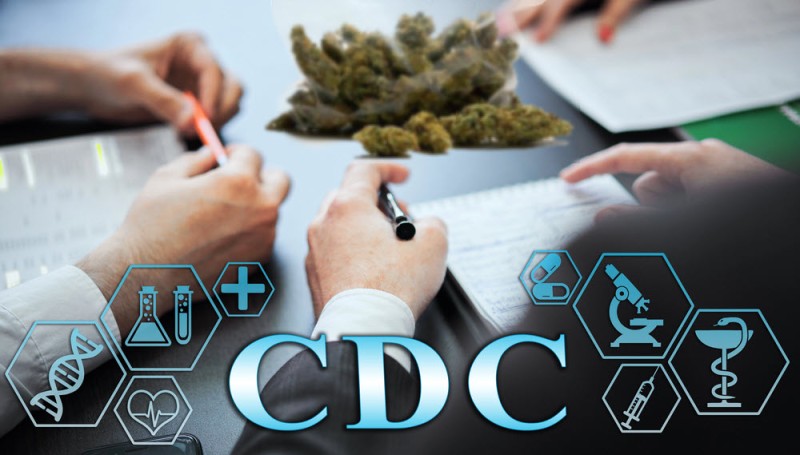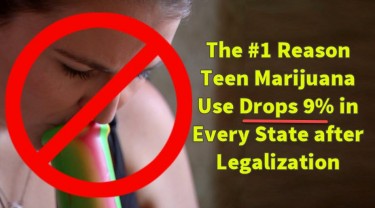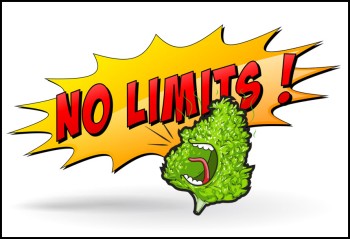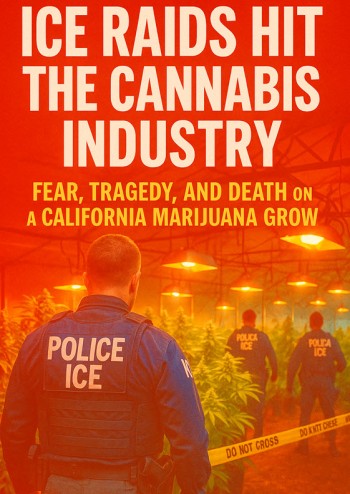
Legalize weed – for the kids!
For decades, opponents of cannabis legalization have wielded a powerful argument: "Think of the children!" We've been told that legalizing marijuana would send the wrong message to our youth, implying that kids would interpret legalization as a green light to start smoking pot en masse. The fear-mongering reached fever pitch, with dire warnings that normalization would lead to a generation of stoned teenagers.
But here's a newsflash that might shock the pearl-clutchers: It is okay to smoke cannabis, just as it's okay for adults to enjoy a glass of wine or light up a cigarette. As free human beings, we have the fundamental right to make choices about what we put into our bodies. Of course, this freedom comes with the caveat of adulthood and responsibility – a nuance often lost in the prohibitionist rhetoric.
Now, let's set aside ideology and look at the cold, hard facts. A recent Centers for Disease Control and Prevention (CDC) report has shed light on an intriguing trend: cannabis use among high school students has actually declined in the years following legalization in various states. This data flies in the face of the "wrong message" narrative, revealing it to be not just a fallacy, but counterproductive to the very goal it claims to champion – protecting our kids.
The irony is palpable. While prohibitionists have been busy wringing their hands over hypothetical scenarios, the real-world impact of legalization tells a different story. It turns out that treating cannabis as a regulated substance, much like alcohol, may be more effective in reducing youth consumption than draconian prohibition ever was.
So, let's dive into this CDC report and unpack its findings. Prepare to have your assumptions challenged as we explore how cannabis legalization might just be the best thing we can do for our kids. The data may surprise you, but one thing is clear: when it comes to cannabis policy, it's time we let facts, not fear, guide our decisions.
A deep dive into the CDC report
The recently published Centers for Disease Control and Prevention (CDC) survey offers a compelling look at the trends in marijuana use among high school students over the past decade. As states across the nation have moved to legalize cannabis, this data provides crucial insights into the actual impact of these policy changes on youth consumption.
One of the most striking findings from the report is the overall decline in past-month marijuana use among high school students. In 2013, 23% of surveyed students reported using marijuana within the past month. By 2023, this figure had dropped to 17% - a significant decrease of 6 percentage points. This downward trend is particularly noteworthy given that it coincides with the expansion of legal cannabis markets across the United States.
The data becomes even more interesting when broken down by gender. Male students showed a dramatic decrease in marijuana use, with rates falling from 25% in 2013 to just 15% in 2023. Female students also saw a decline, albeit less pronounced, from 22% to 19% over the same period. These gender-specific trends warrant further investigation and may offer valuable insights for targeted prevention efforts.
Importantly, the decline in teen cannabis use was observed across all surveyed racial groups during the past decade. This widespread decrease suggests that the trend is not limited to specific demographics but represents a broader shift in youth attitudes and behaviors towards marijuana.
The CDC report's findings are particularly significant because they cover a period of rapid change in cannabis policy across the United States. Since 2012, when Colorado and Washington became the first states to legalize recreational marijuana, numerous other states have followed suit. Despite fears that legalization would lead to increased youth access and use, the data tells a different story.
This study provides strong evidence that legalization, when coupled with proper regulation and education, can actually contribute to harm reduction among youth. By bringing cannabis into a regulated market, states have been able to implement age restrictions, quality control measures, and public education campaigns that appear to be more effective than prohibition in deterring underage use.
The CDC's findings align with other studies that have shown similar trends, reinforcing the credibility of these results. For instance, a recent report from the Substance Abuse and Mental Health Services Administration (SAMHSA) found that the percentage of young people aged 12 to 17 who've ever tried marijuana dropped 18% from 2014 to 2023.
These trends challenge the long-held belief that keeping substances taboo is the best way to prevent youth use. In fact, history has shown us time and again that prohibition often backfires. The allure of the forbidden can make substances more attractive to young people, while lack of open dialogue can lead to misinformation and risky behaviors.
Legalization, on the other hand, allows for honest conversations about the potential risks and benefits of cannabis use. It removes the rebellious appeal associated with illicit substances and provides a framework for responsible adult use. Moreover, it frees up resources that can be redirected towards evidence-based prevention and education programs.
The CDC report serves as a powerful rebuttal to those who argue that legalization sends the wrong message to youth. Instead, it suggests that a regulated market, combined with honest education, may be more effective in reducing underage use than the fear-based tactics of prohibition.
As we continue to navigate the complex landscape of drug policy, it's crucial that we base our decisions on empirical evidence rather than outdated assumptions. The CDC's findings offer a compelling argument that legalization, when implemented thoughtfully, can be a positive step towards protecting our youth and fostering a more honest, health-focused approach to cannabis.
The Sticky Bottom Line
As we reflect on the findings of the CDC report and the broader implications of cannabis legalization, it's clear that our long-held assumptions about drug policy need a serious reality check. While it's tempting to believe that making a substance less accessible will automatically reduce its use, especially among youth, the data tells a different story. Prohibition, despite its good intentions, has failed spectacularly in its mission to keep cannabis out of the hands of young people.
The truth is, bringing cannabis out of the shadows and into the realm of regulated markets has had a surprisingly positive effect. By illuminating the realities of cannabis use, removing the mystique of the forbidden, and fostering open conversations, we've created an environment where young people can make more informed decisions. The black market thrives on misinformation and lack of oversight; legalization brings transparency and accountability.
Perhaps most interestingly, we're witnessing a cultural shift among today's youth. The image of cannabis as a tool of rebellion, a way to "stick it to the man," is fading. This was the allure for previous generations, but today's teenagers seem to be finding other ways to express themselves and assert their independence. While some teens will still choose to use cannabis, the data suggests they're doing so at lower rates than their counterparts did under prohibition.
It's crucial to recognize that those who are determined to use cannabis would likely do so regardless of its legal status. The difference is that in a legalized environment, we have more opportunities to educate, regulate, and implement effective harm reduction strategies.
As we move forward in shaping drug policy, it's time to let go of theoretical possibilities and fear-based decision making. Instead, we must ground our approach in hard data and real-world outcomes. The evidence is clear: when it comes to reducing cannabis consumption among youth, legalization is proving to be a more effective strategy than prohibition ever was.
Let's embrace this reality and focus on creating policies that truly serve our youth, rather than clinging to outdated models that have consistently failed to achieve their goals. By doing so, we can foster a society that deals with cannabis – and other substances – in a more honest, effective, and ultimately healthier way. The sticky bottom line is this: if we truly want to protect our kids, legalization, education, and regulation are our best tools. It's time our policies reflected this truth.






